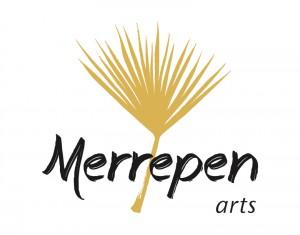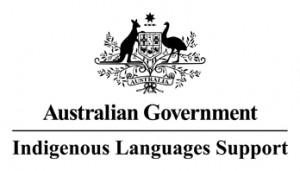Ngan’gi family, society and subsections
Ngen’giwumirri people, particularly those in the eastern estate of Lafuganying, talk of close ties in the past with Wagiman people to the south. Cook (1987:3-4) implies that the Wagiman make the same claim. These ties have effectively been disrupted since the turn of the century, as the Ngen’giwumirri were drawn northwards to the Daly River Crossing and the Wagiman drifted, or were removed southwards to the Pine Creek region. Many older Ngan’gi speakerspeople still claim to either speak or ‘hear’ the Wagiman language. The area around Kuluy has been claimed (Cook 1987:3) to have been shared between these two groups. Cook (1987:4) also notes that both Wagiman and Ngen’giwumirri people are said to be buried in the cave graves at Bupa (Dead Man's Pocket).
The pre-invasion relationships between the Ngen’giwumirri and Ngan’gikurunggurr and their other surrounding neighbours are less readily distinguishable from modern ties, and hence less reconstructable. Genealogical evidence suggests that exogamy with virtually all neighbouring groups was the normal marriage pattern. The Ngen’giwumirri and Ngan’gikurunggurr additionally have strong cultural and trade ties to the south, particularly along the Biyawul Bingarawal trade route through Timber Creek, Kununurra and further south towards Balgo. Biyawul and Bingarawal are two patrimoieties, sometimes labeled in Aboriginal English as ‘Northerners’ and ‘Southerners’, through which ritual trade is mediated. The trade route comes up from Timber Creek to Wadeye, then forks with one branch going northwards to Nadirri and thence towards Belyuen, and the other branch going eastwards through Peppimenarti, to Nauiyu and thence on towards Baranga. Among many other items (ochres, resin/wax, dillybags, pearl shells, armbands, bolts of fabric etc.) bamboo for spear shafts goes southwards, from Biyawul to Bingarawal, while boomerangs go northwards from Bingarawal to Biyawul. Still today Ngan’gi speaking men invest considerable time in fulfilling their Biyawul Bingarawal trade obligations.
The cultural influence from the south, not only in economic life, but also in the spheres of social organisation and ceremonial and ritual life, has been so strong that Stanner refers to it as “the cultural debt that Daly tribes owe to the south and south-west” (Stanner 1933:385). To some extent the Ngen’giwumirri were a buffer between this southern influence and the other Daly language groups. For example the the ‘Arandic’ subsection system was embraced and adapted by the Ngen’giwumirri, but seems not to have spread further north to the western Daly peoples.
The Ngan’gikurunggurr and Ngen’giwumirri languages are associated with continuous blocs of land, and so conversely land affiliation is identified by language affiliation. Speakers of Ngan’gi have a primary affiliation to one of these estates through their father.
Table: Ngan’gi Estate names
| Ngan'gikurunggurr estates |
Ngen'giwumirri estates |
| rak-Fepiminati |
rak-Lafuganying |
| rak-NgambuNgambu |
rak-Merren |
| rak-Nerintyi |
rak-Nudik |
| rak-Merrepen |
rak-Tyin'girim |
| rak-Ngulfe |
rak-Nganambala |
| rak-NintyiNintyi |
rak-Malfiyin |
| |
rak-Papangala |
Estate membership is determined patrilineally, and normally Ngan’gi people talk about their father’s country as their dede ’country’. However Ngan’gi people enjoy multiple relations to country, particularly to their nganingetyi ’mother’s country’, and to a lesser extent to the country of their mother’s mother, and spouse. In some cases these other affiliations become people’s primary claims to land.
Land ownership is generally articulated in terms of a collection of totemic sites. All estate members jointly own these sites and therefore all share the same patriclan totems. Stanner (1933:398) suggests that at the time the subsection section was borrowed, the Ngen’giwumirri may have also adopted a new form of matrilineal subsectional totemism, but this appears not to have lasted.
Subsections
The Ngen’giwumirri were the only Daly group to augment their basically Kariera kinship system with a version of the Arandic subsection system. They refer to this system as Finy 'sweat', or as 'Kin'; when speaking Kriol (this is an adaptation of Engish 'skin', not 'kin'). Stanner (1933:401) implies that the Ngen’giwumirri had only recently borrowed it from the south, at the time when he worked with them in 1932. The impression he gives, that it was fashionable but essentially functionless (Stanner 1933:398-400), would appear to still hold true today, except that the fashionableness too has faded a bit. Pressure to reject the system basically stemmed from problems in meshing it with a Kariera kinship system.
"The Nangiomeri are trying to apply, and have most ingeniously done so, to a Kariera type of social organisation, a subsectional system elaborated by a much more complex society probably related to the Aranda type. That is, a systematisation of a kinship system of the Aranda type has spread to them without the system upon which it is based itself having been adopted."(Stanner 1933:398)
The subsection system was re-organised into two parallel cycles of matrilineal descent. Looking at Table 21, you can see that Tyulama and Nawula are brother and sister. Tyulama marries Nanagu, and their children are Nimara and Tyabada. Nawula marries Tyanama, and their children are Tyangari and Nangari, and so on. The cycle is four generational, whereby a man's father's father and son's son fall into the same subsection. Table 21 shows the ideal, or first choice, marriage partners, however a difference of two generations is considered an appropriate second choice option. Thus for example, if there is no suitable Nanagu for a Tyulama, he may marry a Namity instead. The strict matrilineal determination of subsection means that whether a Tyulama marries a Nanagu as his first choice, or whether a Tyangala marries her as his second choice, their children will be Nimara and Tyabada regardless. The ingenuity that Stanner referred to was the development of a mechanism to prevent a man marrying his own daughter's daughter, which was a potential development of the choice in subsection (Stanner 1933:398).
These Finy names are clearly borrowed, cognate with the Jaminjungan subsection terms widespread throughout the region. The male subsection terms are the only Ngan’gi words beginning with voiced palatal stops. Because this contrast is irrelevant elsewhere, we just write these words with the digraph 'ty' anyway.
The finy system now only exists among the Ngen’giwumirri speakers in a rather marginal way. While most older people can tell you what their Finy subsection is, public reckoning of relationships is mostly carried out in reference to the kinship system, not the Finy system. However around the Daly region there are still Ngan’gi people who have Finy terms as one of the common names they are generally referred to by.
Ngan'gi Finy (Skin) subsection system


